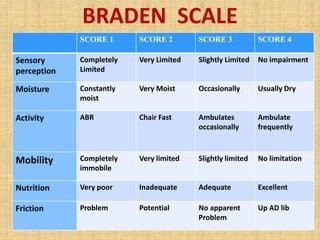A nurse is talking with a young adult client who has a family history of osteoporosis, Which health promotion activity should the nurse recommend as a possible preventive measure?
Increase sodium intake.
Drink a cup of coffee each morning
Have a bone-density scan each year.
Engage in weight-bearing exercise regularly
The Correct Answer is D
A. Increase sodium intake - This is not a preventive measure for osteoporosis. High sodium intake can lead to increased calcium excretion and weaken bones.
B. Drink a cup of coffee each morning - Caffeine consumption, especially in excess, can interfere with calcium absorption and increase calcium excretion. Limiting caffeine intake is recommended for bone health. Drinking coffee in moderation is acceptable but excessive consumption should be avoided.
C. Have a bone-density scan each year - While bone-density scans (DEXA scans) are useful for diagnosing osteoporosis or assessing bone health, they are not typically recommended for young adults with a family history of osteoporosis unless there are specific risk factors present. Yearly scans are unnecessary and not cost-effective for young adults without significant risk factors.
D. Engage in weight-bearing exercise regularly - Weight-bearing exercises, such as walking, jogging, dancing, and resistance training, help to increase bone density and strength. Regular physical activity, especially weight-bearing exercises, is a recommended preventive measure against osteoporosis.
Nursing Test Bank
Naxlex Comprehensive Predictor Exams
Related Questions
Correct Answer is A
Explanation
A. Apply a moisture barrier ointment to the client's skin
Applying a moisture barrier ointment creates a protective barrier on the skin, preventing prolonged exposure to moisture, which can lead to skin breakdown in individuals with urinary incontinence. Keeping the skin dry and protected is essential in preventing skin irritation and breakdown.
B. Check the client's skin every 8 hr for signs of breakdown - Skin should be assessed more frequently, ideally every 2-4 hours, especially in clients with urinary incontinence, to detect signs of breakdown early.
C. Clean the client's skin and perineum with hot water after each episode of incontinence - Hot water can be harsh on the skin and exacerbate irritation. It's recommended to use mild, warm water and gentle cleansing techniques. Harsh cleaning methods can damage the skin.
D. Request a prescription for the insertion of an indwelling urinary catheter - Indwelling urinary catheters pose an increased risk of infection and other complications. Catheters should only be used when absolutely necessary, and preventive measures should be taken to manage incontinence without catheterization whenever possible.
Correct Answer is B
Explanation
A. Morse Scale:
The Morse Scale, also known as the Morse Fall Scale, is used to assess a patient's risk of falling. It evaluates various factors such as history of falling, secondary diagnosis, ambulatory aids, IV therapy, gait, and mental status. It is primarily focused on assessing the risk of falls, not pressure ulcers.
B. Braden Scale:
As previously mentioned, the Braden Scale assesses a patient's risk for developing pressure ulcers. It takes into account sensory perception, moisture, activity, mobility, nutrition, and friction/shear. The scale helps healthcare providers determine the level of risk a patient has for developing pressure sores and guides interventions to prevent them.
C. Bristol Scale:
The Bristol Stool Scale is used to classify the form of human feces into seven categories. It is a medical aid designed to classify the form of human feces into seven categories. This scale is primarily used to assess bowel movements and is unrelated to pressure ulcers.
D. Hendrich II Scale:
The Hendrich II Fall Risk Model is a tool designed to identify patients at risk for falls. It includes factors such as confusion, symptomatic depression, altered elimination, dizziness, male gender, and the use of antiepileptics, benzodiazepines, or non-opioid analgesics. Similar to the Morse Scale, it focuses on assessing the risk of falls, not pressure ulcers.

Whether you are a student looking to ace your exams or a practicing nurse seeking to enhance your expertise , our nursing education contents will empower you with the confidence and competence to make a difference in the lives of patients and become a respected leader in the healthcare field.
Visit Naxlex, invest in your future and unlock endless possibilities with our unparalleled nursing education contents today
Report Wrong Answer on the Current Question
Do you disagree with the answer? If yes, what is your expected answer? Explain.
Kindly be descriptive with the issue you are facing.
